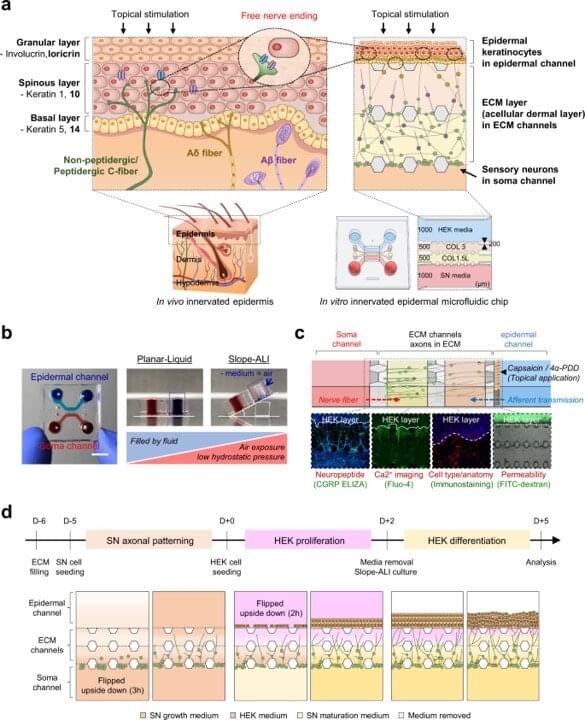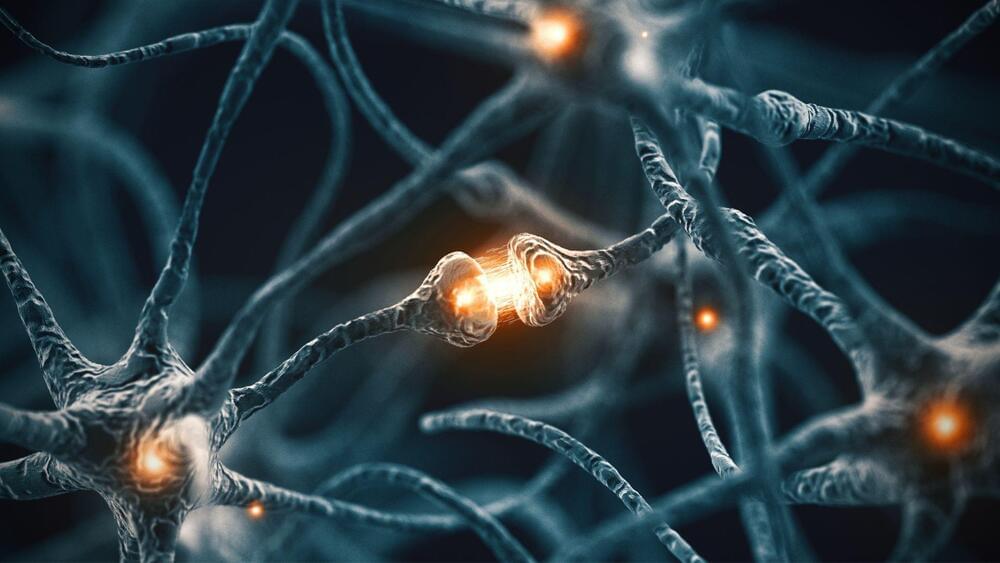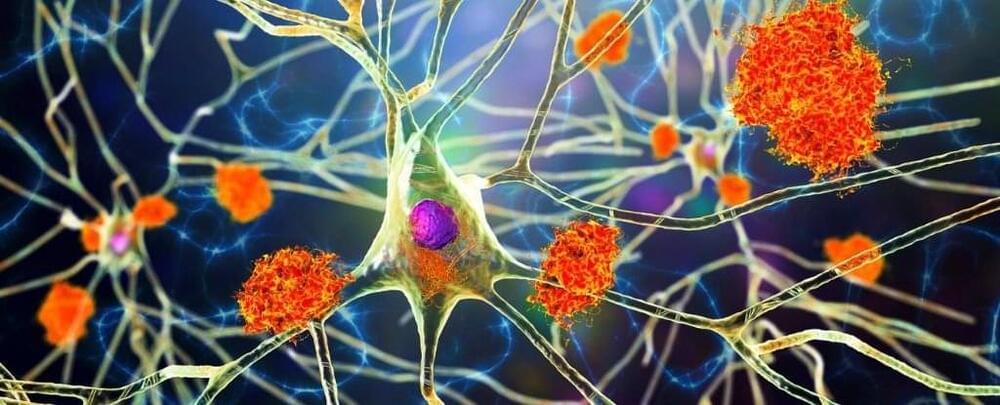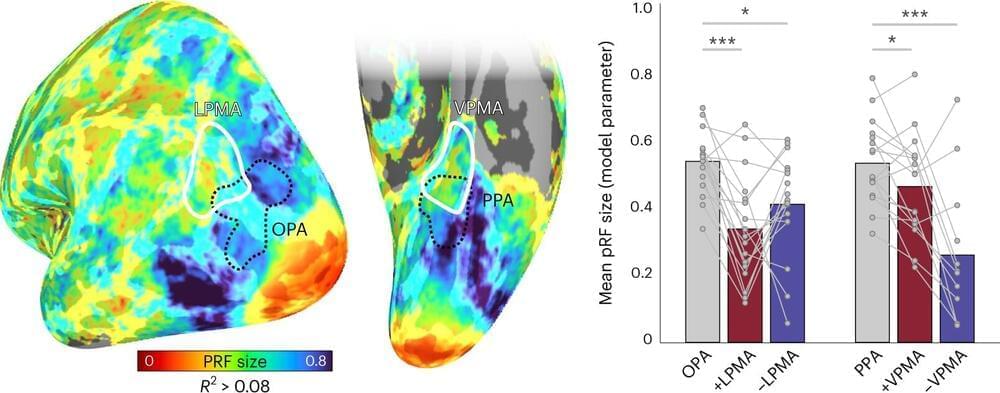Year 2023 face_with_colon_three
Bioengineers and tissue engineers intend to reconstruct skin equivalents with physiologically relevant cellular and matrix architectures for basic research and industrial applications. Skin pathophysiology depends on skin-nerve crosstalk and researchers must therefore develop reliable models of skin in the lab to assess selective communications between epidermal keratinocytes and sensory neurons.
In a new report now published in Nature Communications, Jinchul Ahn and a research team in mechanical engineering, bio-convergence engineering, and therapeutics and biotechnology in South Korea presented a three-dimensional, innervated epidermal keratinocyte layer on a microfluidic chip to create a sensory neuron-epidermal keratinocyte co-culture model. The biological model maintained well-organized basal-suprabasal stratification and enhanced barrier function for physiologically relevant anatomical representation to show the feasibility of imaging in the lab, alongside functional analyses to improve the existing co-culture models. The platform is well-suited for biomedical and pharmaceutical research.
Skin: The largest sensory organ of the human body
Skin is composed of a complex network of sensory nerve fibers to form a highly sensitive organ with mechanoreceptors, thermoreceptors and nociceptors. These neuronal subtypes reside in the dorsal root ganglia and are densely and distinctly innervated into the cutaneous layers. Sensory nerve fibers in the skin also express and release nerve mediators including neuropeptides to signal the skin. The biological significance of nerves to sensations and other biological skin functions have formed physical and pathological correlations with several skin diseases, making these instruments apt in vivo models to emulate skin-nerve interactions.









